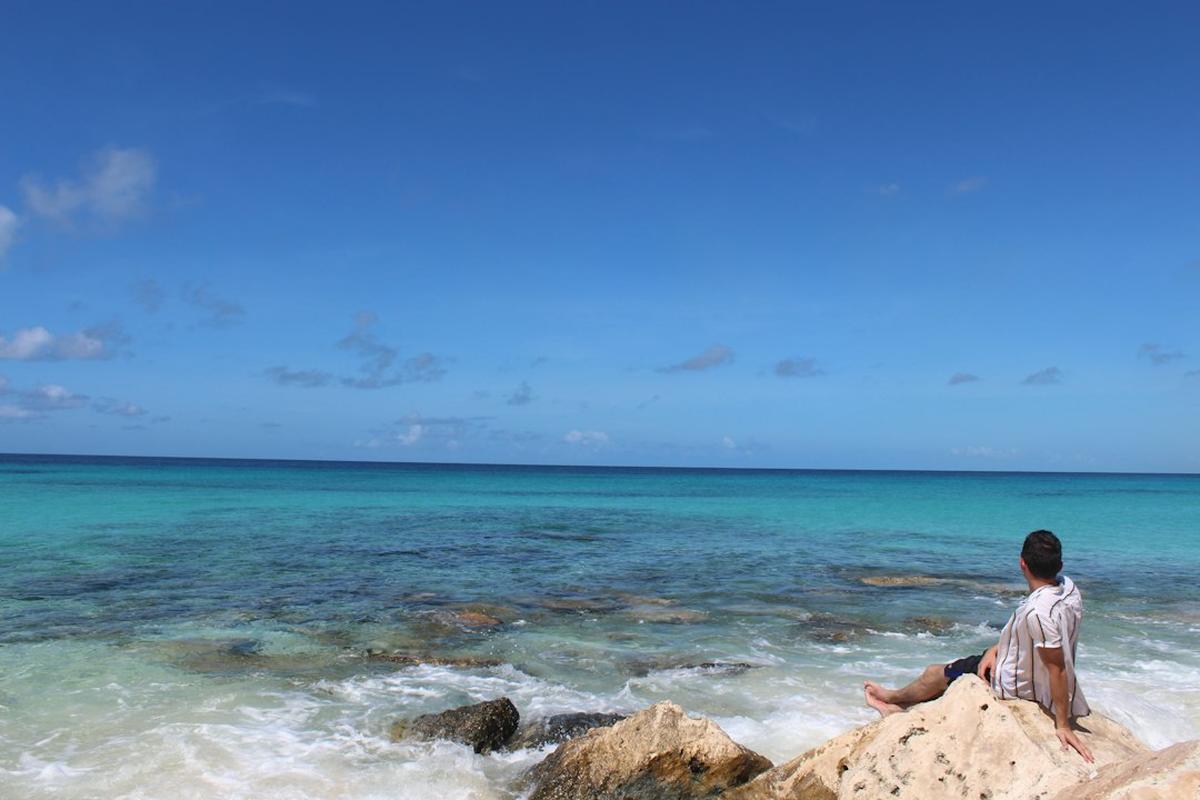The Galapagos Islands, a volcanic archipelago in the Pacific Ocean, are renowned for their unique wildlife and their significant role in the development of Charles Darwin’s theory of evolution. This article aims to explore the value of a visit to these extraordinary islands, considering their natural wonders, scientific importance, tourist activities, and conservation efforts.
The Unique Landscape of the Galapagos Islands
Geological Features and Formation
The Galapagos Islands were formed by volcanic activity, with the oldest islands dating back over four million years. This volcanic origin has resulted in a diverse range of landscapes, from barren lava fields to lush highland forests. The islands are also home to several active volcanoes, offering a fascinating insight into the Earth’s geological processes.
Distinctive Flora and Fauna
The isolation of the Galapagos Islands has led to the evolution of a unique array of flora and fauna. Many plant species, such as the giant daisy tree and the Galapagos tomato, are found nowhere else on Earth. The islands are also home to a diverse range of animal species, many of which have adapted to the harsh volcanic landscapes in remarkable ways.
The Extraordinary Endemic Species of the Galapagos Islands
The Giant Tortoise: A Living Fossil
Perhaps the most iconic species of the Galapagos Islands is the giant tortoise. These remarkable creatures, which can live for over a century, are considered ‘living fossils’ due to their ancient lineage. Observing these gentle giants in their natural habitat is a truly unforgettable experience.
Darwin Finch: Evolution’s Poster Child
The Darwin finch, named after Charles Darwin, is another emblematic species of the Galapagos Islands. These small birds played a crucial role in the development of Darwin’s theory of evolution by natural selection, due to their varied beak shapes and sizes, which reflect their adaptation to different food sources.
Galapagos Fur Seal: A Unique Marine Mammal
The Galapagos fur seal is another endemic species that adds to the allure of the islands. These seals, which are actually a type of sea lion, are unique in their preference for rocky shorelines over sandy beaches. Their playful nature and endearing appearance make them a favorite among visitors.
The Role of the Galapagos Islands in Scientific Discovery
Charles Darwin and the Theory of Evolution
The Galapagos Islands are perhaps best known for their role in the development of Charles Darwin’s theory of evolution. During his visit in 1835, Darwin observed the islands’ unique wildlife and noted the variations between species on different islands. These observations formed the basis of his groundbreaking theory, which revolutionized our understanding of the natural world.
Ongoing Research and Discoveries
The scientific importance of the Galapagos Islands extends beyond Darwin’s time. Today, the islands are a hub for ongoing research in fields such as evolutionary biology, ecology, and conservation science. New species are still being discovered, and the islands continue to provide invaluable insights into the processes of evolution and adaptation.
Experiencing the Galapagos Islands: Tourist Activities
Land-Based Tours: Hiking and Exploring
One of the best ways to experience the Galapagos Islands is through land-based tours. These typically involve hiking through the islands’ diverse landscapes, from volcanic craters to lush forests. Along the way, visitors have the opportunity to observe the islands’ unique wildlife up close.
Water-Based Activities: Snorkeling and Diving
The waters surrounding the Galapagos Islands are teeming with marine life, making them a paradise for snorkeling and diving. Visitors can swim alongside sea turtles, tropical fish, and even sharks. The islands are also home to the world’s northernmost penguin species, which can often be seen while snorkeling or diving.
Wildlife Viewing Opportunities
The Galapagos Islands offer unparalleled opportunities for wildlife viewing. From the iconic giant tortoises and Darwin finches to the playful Galapagos fur seals and penguins, the islands are a wildlife lover’s dream. Many species are unafraid of humans, allowing for close encounters and exceptional photography opportunities.
Environmental Impact and Conservation Efforts
Threats to the Galapagos Ecosystem
Despite their isolation, the Galapagos Islands face several environmental threats. These include invasive species, climate change, and the impact of tourism. Invasive species, in particular, pose a significant threat to the islands’ unique ecosystems, outcompeting native species and disrupting ecological balances.
Conservation Measures and Sustainable Tourism
In response to these threats, several conservation measures have been implemented. These include strict regulations on tourism, efforts to eradicate invasive species, and ongoing research to monitor and protect the islands’ unique ecosystems. Sustainable tourism practices are also encouraged, with visitors urged to minimize their environmental impact and contribute to conservation efforts.
Practical Considerations for Visiting the Galapagos Islands
Cost and Budgeting for a Galapagos Trip
A trip to the Galapagos Islands can be quite costly, due to the remote location and the high cost of maintaining sustainable tourism practices. However, with careful planning and budgeting, it is possible to experience the islands’ unique wonders without breaking the bank.
Best Time to Visit
The Galapagos Islands can be visited year-round, but the best time to visit depends on what you want to see and do. The warm season (December to May) is ideal for snorkeling and diving, while the cool season (June to November) is best for wildlife viewing, as many species are more active during this time.
Travel and Accommodation Options
There are several ways to visit the Galapagos Islands, from land-based tours to cruises. Accommodation options range from budget guesthouses to luxury eco-lodges. Regardless of your budget or travel style, it’s essential to book in advance, as visitor numbers are strictly regulated to protect the islands’ fragile ecosystems.
Personal Experiences: Testimonials from Visitors
First-Hand Accounts of the Galapagos Experience
Many visitors describe their trip to the Galapagos Islands as a once-in-a-lifetime experience. From the thrill of swimming with sea turtles to the awe of standing among a group of giant tortoises, the islands offer a unique blend of natural beauty, wildlife encounters, and scientific intrigue.
Evaluating the Worth of a Galapagos Visit
While a trip to the Galapagos Islands can be costly, many visitors feel that the experience is worth every penny. The opportunity to observe unique wildlife up close, explore diverse landscapes, and learn about the islands’ scientific significance is truly priceless.
Conclusion: Are the Galapagos Islands Worth It?
Weighing the Costs and Benefits
When considering whether a trip to the Galapagos Islands is worth it, it’s important to weigh the costs against the benefits. While the financial cost can be high, the rewards – in terms of unique wildlife encounters, stunning landscapes, and educational opportunities – are immense.
Personal Decision and Value Assessment
Ultimately, the value of a visit to the Galapagos Islands is a personal decision. For those with a passion for wildlife, nature, or science, the islands offer an unparalleled experience that is likely to be worth the cost. For others, the high cost may outweigh the benefits. However, for anyone with an interest in the natural world, the Galapagos Islands are a destination that should not be missed.
Frequently Asked Questions
What is the best time to visit the Galapagos Islands?
The Galapagos Islands can be visited year-round, but the best time to visit depends on what you want to see and do. The warm season (December to May) is ideal for snorkeling and diving, while the cool season (June to November) is best for wildlife viewing.
How much does a trip to the Galapagos Islands cost?
The cost of a trip to the Galapagos Islands can vary greatly depending on factors such as the length of your stay, the type of accommodation, and the activities you choose to do. However, due to the remote location and the high cost of maintaining sustainable tourism practices, a trip to the Galapagos Islands can be quite costly.
What wildlife can I see in the Galapagos Islands?
The Galapagos Islands are home to a unique array of wildlife, including giant tortoises, Darwin finches, Galapagos fur seals, and Galapagos penguins. Many species are unafraid of humans, allowing for close encounters and exceptional photography opportunities.
What are the main threats to the Galapagos Islands?
The main threats to the Galapagos Islands include invasive species, climate change, and the impact of tourism. Invasive species, in particular, pose a significant threat to the islands’ unique ecosystems, outcompeting native species and disrupting ecological balances.
What conservation measures are in place in the Galapagos Islands?
Conservation measures in the Galapagos Islands include strict regulations on tourism, efforts to eradicate invasive species, and ongoing research to monitor and protect the islands’ unique ecosystems. Sustainable tourism practices are also encouraged, with visitors urged to minimize their environmental impact and contribute to conservation efforts.
Are the Galapagos Islands worth the cost?
While a trip to the Galapagos Islands can be costly, many visitors feel that the experience is worth every penny. The opportunity to observe unique wildlife up close, explore diverse landscapes, and learn about the islands’ scientific significance is truly priceless.
References:
- Darwin, C. (1859). On the Origin of Species. London: John Murray.
- Galapagos Conservancy. (2020). Conservation Challenges. Retrieved from https://www.galapagos.org/conservation/conservation/challenges/
- Galapagos National Park Directorate. (2020). Visitor Sites. Retrieved from http://www.galapagospark.org/onecol.php?page=turismositiosvisita
- Grant, P. R., & Grant, B. R. (2008). How and Why Species Multiply: The Radiation of Darwin’s Finches. Princeton: Princeton University Press.
- Trillmich, F., & Wolf, J. B. (2008). Parent-offspring and sibling conflict in Galapagos fur seals and sea lions. Behavioral Ecology and Sociobiology, 62(3), 363-375.








